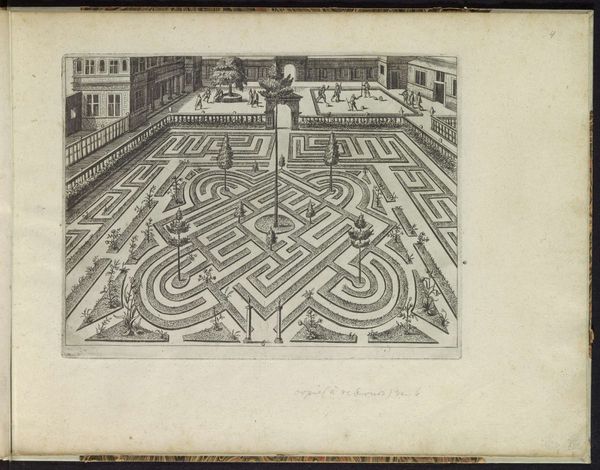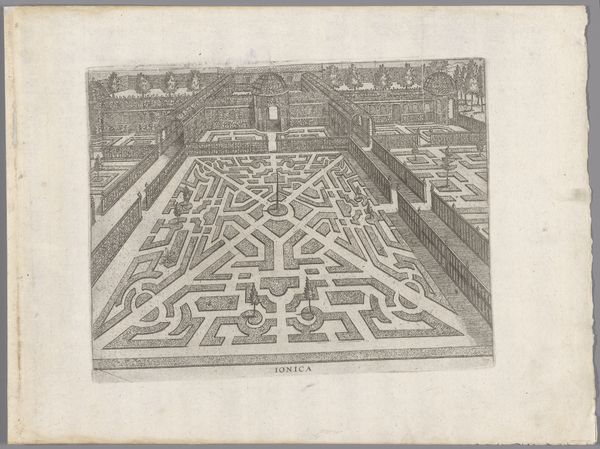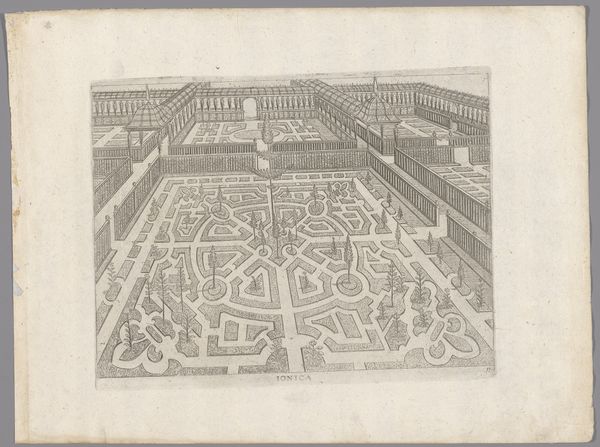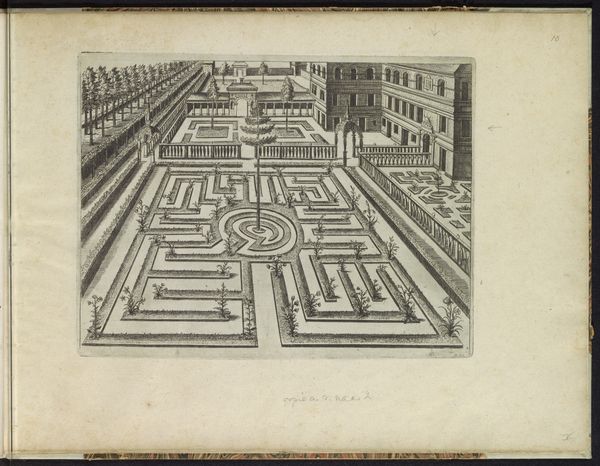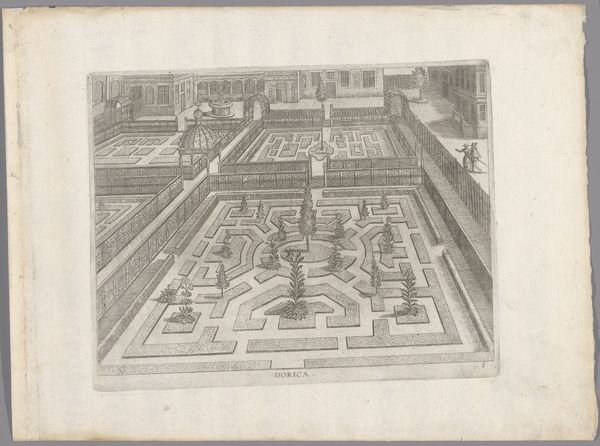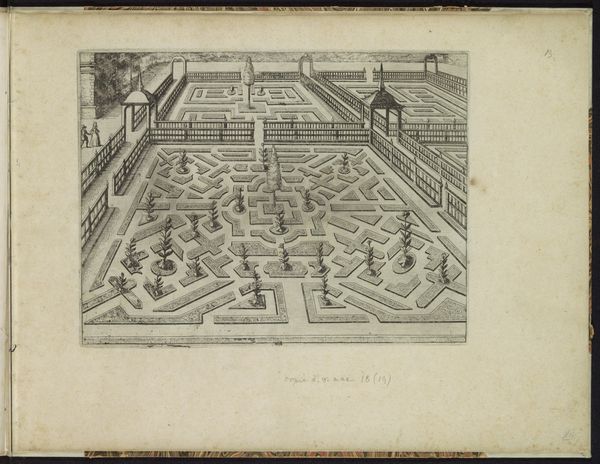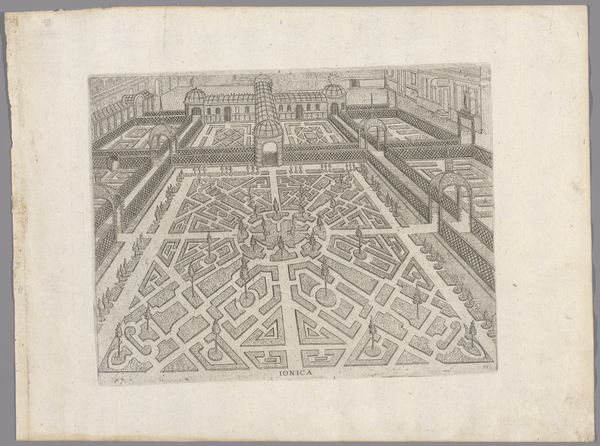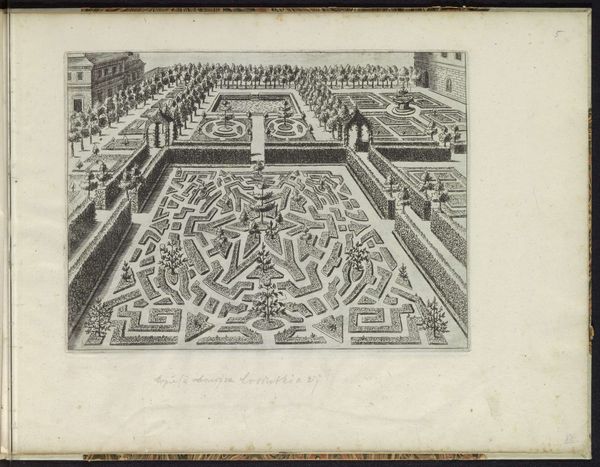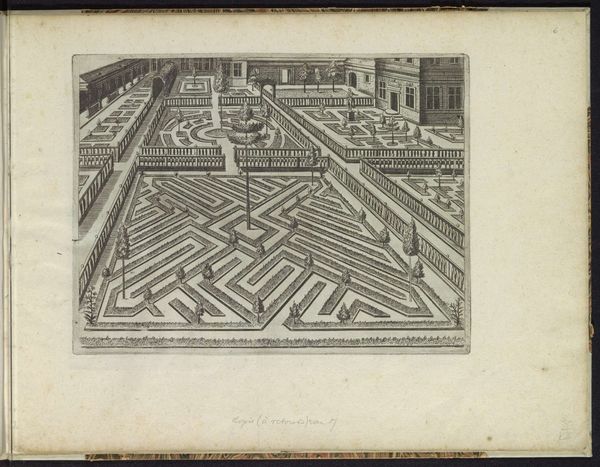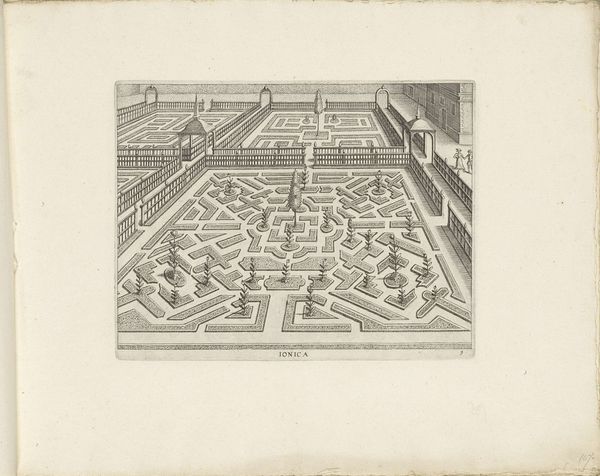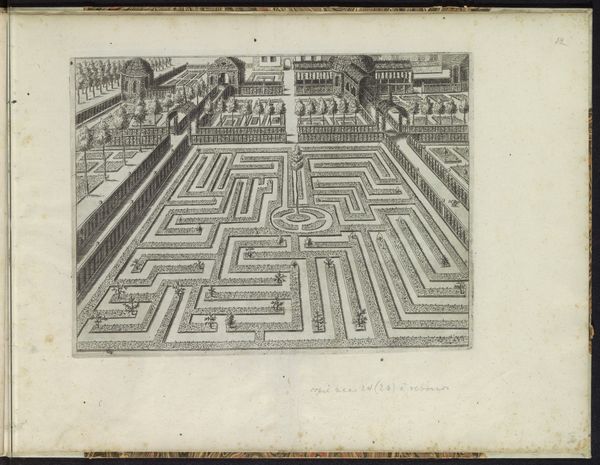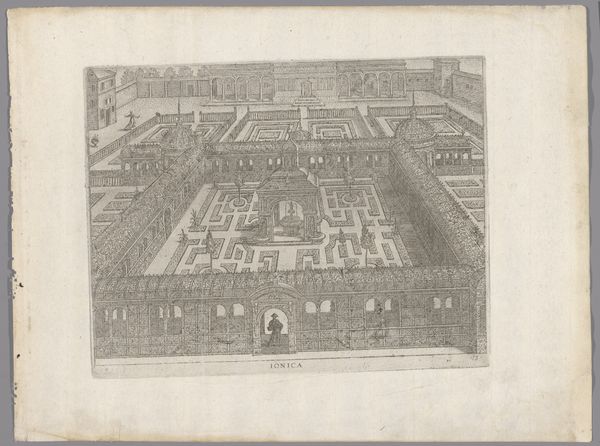
drawing, etching, paper, ink, engraving
#
drawing
#
garden
#
etching
#
landscape
#
paper
#
ink
#
geometric
#
engraving
Dimensions: height 181 mm, width 242 mm
Copyright: Rijks Museum: Open Domain
Editor: Here we have "Garden with a parterre and diagonal paths," created around 1615, using etching and engraving. It reminds me a bit of looking down at a board game – all these formal, carefully laid-out paths and hedges. What do you see in this piece, from a historical perspective? Curator: This engraving gives us a fascinating glimpse into the rise of formal garden design in the early 17th century. Think about the power structures inherent in taming nature to such a rigid, geometric plan. Who commissioned this garden, do you think, and what did it signify? Editor: My guess is a wealthy landowner. Was this a way for them to show their status? Curator: Precisely! This isn’t just about aesthetics; it's about control, wealth, and the imposition of order onto the natural world. Consider how these gardens were social spaces, stages for displays of power. Editor: So, it was as much about projecting an image as enjoying nature? Curator: Exactly. The garden becomes an extension of the house, and therefore the owner's power. The strict lines, the imposed symmetry, it all speaks to a desire for control, both literally and figuratively. Did gardens like these influence politics, or reflect power in some way? Editor: Maybe the design of the garden parallels how they wanted society to function: orderly and predictable? It definitely gives me a lot to think about regarding how people exert their will through their surroundings. Curator: Indeed. Examining art like this print opens a window into the complex relationships between aesthetics, power, and social order of the time.
Comments
No comments
Be the first to comment and join the conversation on the ultimate creative platform.

